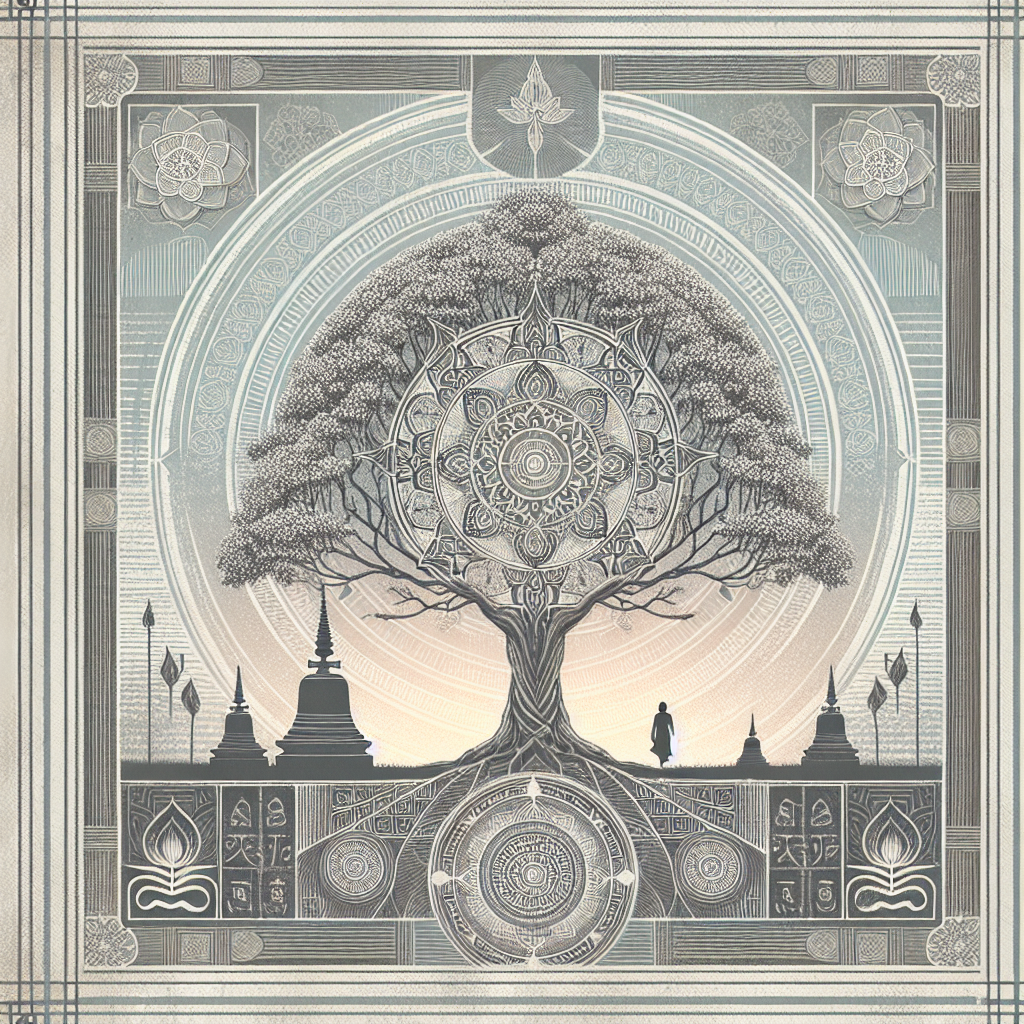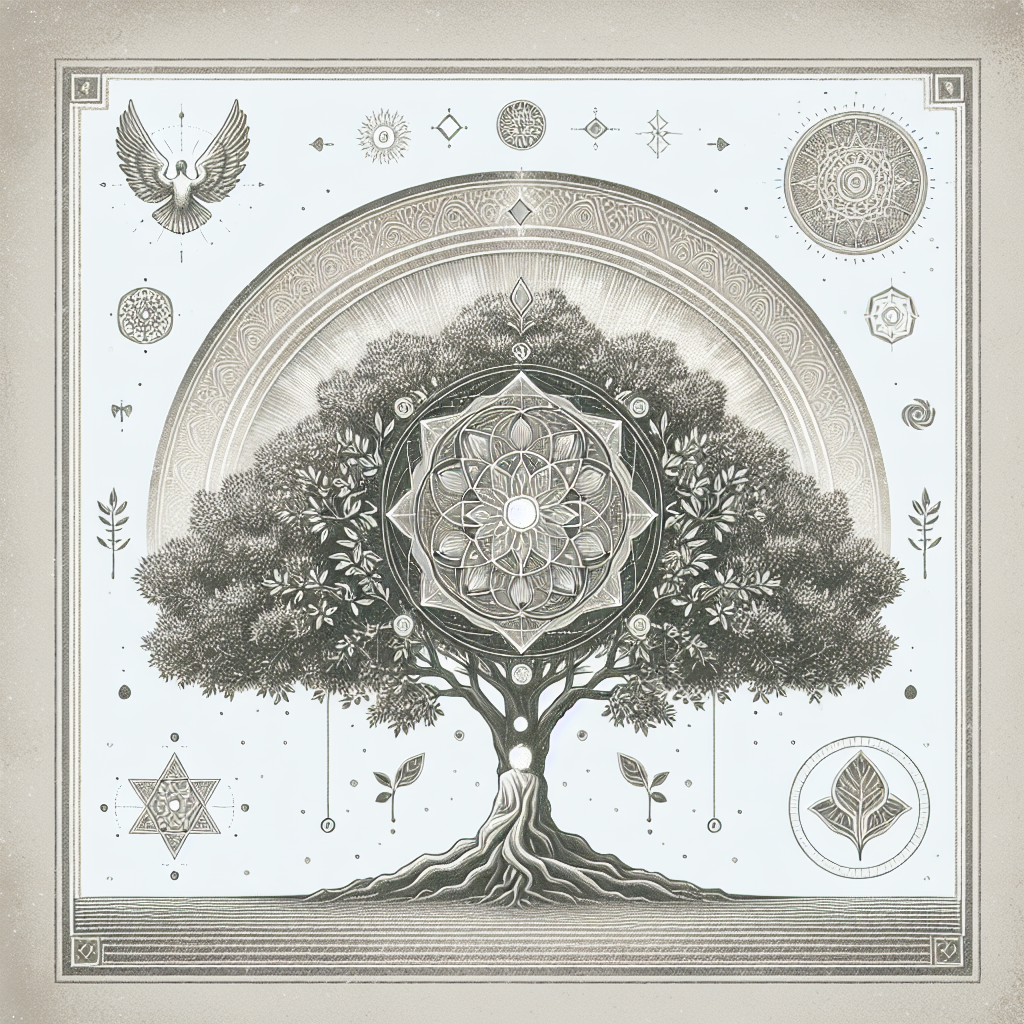
The Bodhi Tree (Bodhivṛkṣa)
The Bodhi Tree (Sanskrit: bodhivṛkṣa, बोधिवृक्ष; Pali: bodhirukkha)—also called the Bo tree or sacred fig—refers to the Ficus religiosa at Bodh Gaya, India, under which Siddhārtha Gautama is held to have attained awakening (bodhi). In Buddhist sources and later usage, “Bodhi tree” also names ritually propagated descendants planted at pilgrimage sites worldwide. The living tree beside the Mahabodhi Temple is venerated as a descendant of the original. [1][2]
History & Origins
Textual and archaeological records converge on Bodh Gaya (Bihar, India) as the place of the Buddha’s enlightenment. In the 3rd century BCE, Emperor Aśoka monumentalized the site with a stone “Diamond Throne” (vajrāsana) and an early shrine. [1]
From at least the early centuries CE, images and reliefs present the Bodhi tree (Ficus religiosa) as the marker of awakening, often without depicting the Buddha himself. [3]
According to long-standing Sri Lankan and North Indian traditions, a cutting from the Bodh Gaya tree was brought by Aśoka’s daughter Saṅghamittā to Anurādhapura in the 3rd century BCE. That tree—Jaya Sri Maha Bodhi—remains an important focus of devotion and transmission narratives. [2]
Medieval and colonial accounts report episodes of damage and replanting at Bodh Gaya, with scholarly debate over details (for example, attributions to regional rulers such as Śaśāṅka in the 7th century). The present tree is recognized as a successor, maintained through historical restorations and, in modern times, both conservation and ritual care. [1][4]
Across these changes, the site has been tended as a living link between place, practice, and remembrance.
What It Looks Like
Ficus religiosa is a large fig with:
- a broad crown and smooth gray bark;
- distinctive heart‑shaped leaves with long drip‑tips that can extend 5–10 cm or more;
- small seasonal fruits (syconia).
These leaf forms—easy to stylize in art—help viewers identify the Bodhi tree in visual culture. At Bodh Gaya, the tree stands immediately west of the main temple, with the vajrāsana and railings marking the bodhimaṇḍa (seat of awakening). [3][1]

What It Means
“Bodhi” means awakening or insight. The Bodhi Tree is therefore a spatial and symbolic index of the event that defines Buddhahood in buddhism. Early Buddhist practice and art often represented the Buddha aniconically—through the tree, throne, and footprint motifs—emphasizing the place and act of awakening rather than a bodily image. [3]
Over time, the tree gathered layered meanings—protection, fertility, kingship, and cosmic order—drawing on earlier South Asian arboreal symbolism (e.g., aśvattha/peepal) and reframed within Buddhist soteriology. [3][2] As a result, the Bodhi tree came to signify both the groundedness of the earth and the possibility of inner transformation.
How It’s Used
Today, Bodhi trees structure devotion, memory, and practice:
- Pilgrimage and ritual. Pilgrims circumambulate the tree and vajrāsana, offer flowers and lamps (subject to conservation rules), chant, and meditate, treating the site as a living relic. [1][4]
- Global plantings. Monasteries around the world plant Bodhi trees—often from propagated cuttings of Ficus religiosa—to materialize ties to Bodh Gaya and to provide shaded spaces for practice. Temple records typically identify these plantings as descendants or commemorative “Bodhi” trees. [2]
- Stewardship and care. Site authorities combine ritual access with arboricultural management—soil aeration, pest control, controlled lighting, and succession planning (backup Ficus religiosa saplings)—to safeguard longevity while maintaining pilgrimage functions. These measures are documented in modern conservation programs and scholarship and reflect ongoing negotiations between heritage stewardship and religious life. [4][1]
In this way, the Bodhi Tree remains both a carefully protected heritage tree and a quiet center where communities gather, reflect, and renew their commitment to the path of awakening.
Sources
[1] UNESCO World Heritage Centre. Mahabodhi Temple Complex at Bodh Gaya, 2002. Authoritative dossier on site history, layout, and the Bodhi tree’s status within the complex. https://whc.unesco.org/en/list/1056/
[2] Keown, Damien. “Bodhi Tree,” in A Dictionary of Buddhism, 2004. Concise reference on definition, names, and key traditions including Anurādhapura lineage. https://www.oxfordreference.com/abstract/10.1093/acref/9780198605607.001.0001/acref-9780198605607-e-283
[3] de Silva, Lily. “The Cult of the Bodhi Tree: Its Antiquity and Evolution,” Journal of Pali and Buddhist Studies 6 (1993): 69–92. Peer‑reviewed study of origins, symbolism, and early evidence. https://doi.org/10.20769/jpbs.6.0_69
[4] Sarao, K. T. S. The History of Mahabodhi Temple at Bodh Gaya, 2020. Academic monograph on site history, modern conservation, and ritual-legal contexts of the Bodhi tree. https://doi.org/10.1007/978-981-15-8067-3